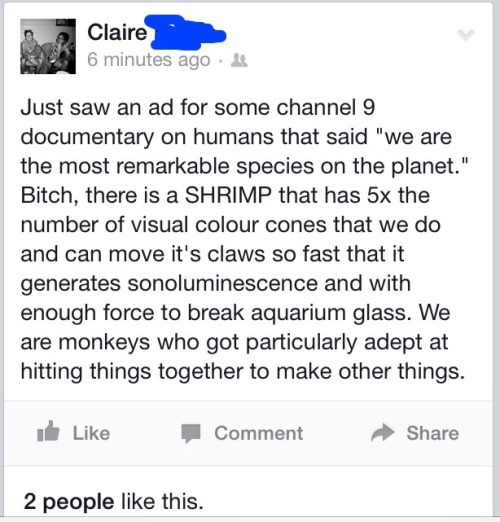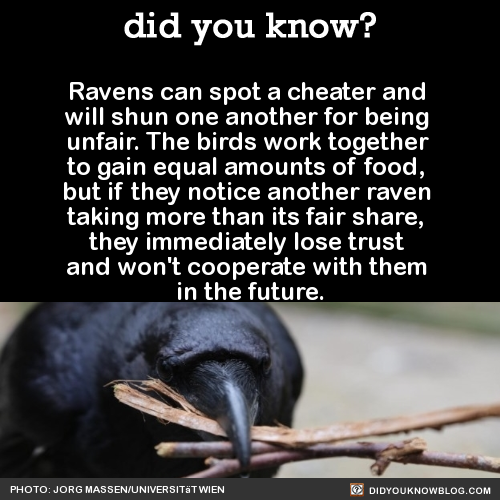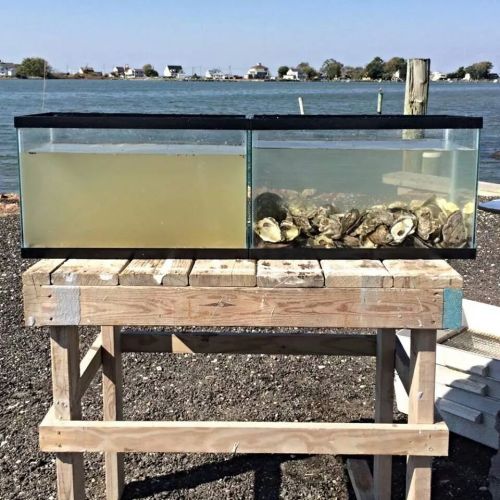I Am Not Here For The Idea That Humans > Everything Else.

I am not here for the idea that humans > everything else.
More Posts from Dotmpotter and Others

This is just great.
That is the course that world leaders set when they met at the United Nations in New York on September 25 to adopt the Sustainable Development Goals (SDGs). The 17 goals range from ending poverty and improving health to protecting the planet’s biosphere and providing energy for all. They emerged from the largest summit in the UN’s history, the “Rio+20” conference in 2012, followed by the largest consultation the UN has ever undertaken.
We need your help to sustain our not-for-profit mission: ensuring that readers around the world have equal access to ideas and analysis from the world’s leading thinkers.
Unlike their predecessor, the Millennium Development Goals, which focused almost exclusively on developing countries, the new global goals are universal and apply to all countries equally. Their adoption indicates widespread acceptance of the fact that all countries share responsibility for the long-term stability of Earth’s natural cycles, on which the planet’s ability to support us depends.
Johan Rockstrom goes all in on poverty reduction and climate change.
KARMA POLICE: GCHQ's plan to track every Web user in the world

The KARMA POLICE program is detailed in newly released Snowden docs published on The Intercept; it began as a project to identify every listener to every Internet radio station (to find people listening to jihadi radio) and grew into an ambitious plan to identify every Web user and catalog their activities from porn habits to Skype contacts.
The program began in 2007/8 and it mined BLACK HOLE, which is GCHQ’s repository for all the data sucked up by its fiber taps (which it calls “probes”). It attempted to map IP addresses to peoples’ identities, and cross reference users’ identities on various systems and in various locations, collecting them into “a web browsing profile for every visible user on the Internet.”
Part of this was accomplished by looking at a users’ cookies – if you log into Google on your phone and your laptop, GCHQ use its surveillance views into that cookie to connect all the traffic from your laptop and phone with a single identity. The agency exploited cookies from a wide variety of popular websites that put like/share buttons, beacons, and other assets on a many other sites. The targeted cookies came from Google, Microsoft, Facebook, Reddit, the BBC, Amazon, WordPress, Yahoo, and others.
KARMA POLICE drew on a frankly bewildering array of other programs, which sucked up data from a variety of sources. These programs were given exotic codenames by GCHQ: SOCIAL ANTHROPOID, MEMORY HOLE, MARBLED GECKO, INFINITE MONKEYS, etc. These logged different kinds of Internet events – search queries, Google Maps searches, and BBS/message-board posts.
The UK spy agency had an extraordinary view into the world’s Internet traffic thanks to the number of oceanic fiber links that make landfall in the UK.
Like the NSA, GCHQ relied on secret interpretations of the laws on spying to paper over its activities, so that it could tell its governmental overseers that all its activities were lawful. It amassed records on people from all over the world, including Britons, and routinely allows its spying partners to search its databases. The US NSA, as well as spy agencies from Canada, Australia, and New Zealand all have access to its data on British citizens and people from all over the world.
Read the rest
Ending slavery will also help save the one thing that connects us all... Earth.

Read it here.
“Desperate migrants from Myanmar and Cambodia are enslaved on fishing boats to strip the oceans of fish… in Brazil, young men are trapped by debt in work illegally logging the Amazon forest… Brick kilns in India, operated by bonded labourers, are fuelled with old tyres and used motor oil, spewing carcinogens into the air.”
REBLOG to educate your community about the impact of our everyday consumption.

In an experiment, two ravens had to simultaneously pull the two ends of one rope to slide a platform with two pieces of cheese into reach. If only one of them pulled, the rope would slip through the loops, leaving them with no cheese. Without any training they solved the task and cooperated successfully.

However, when one of the two birds cheated and stole the reward of its companion, the victims of such cheats immediately noticed and started defecting in further trials with the same individual.

“Such a sophisticated way of keeping your partner in check has previously only been shown in humans and chimpanzees, and is a complete novelty among birds.”

Source

In the Common Sense department: from the Where In Oslo website.

One of the many data-driven projects to make the world a better place over at DataKind.
Question
Information can be very valuable. But it loses value with age. It becomes history, and less of a tool for change.
What value does information about poverty have? Well, when it’s timely—which historically poverty data has not been—that information can trigger reactions: in monetary policy, in foreign aid, in any imaginable channel of support. Time can mitigate starvation and disease, and save untold lives.
So we wanted to know: What kind of data could be secured easily, cheaply, and quickly that might provide nearly real time analysis on poverty? We thought the answer might be written in the lights.
Check out their findings: (via DataKind | Shining a Light on Poverty)

Both were filled at the same time with the same water, only one had oysters.
Yet despite decades of relegation to roles as tourist attractions or advertising gimmicks, airships may be on the verge of a comeback. This resurgence will be fueled not by impractical nostalgia or fandom, but by incredible advances in airship technology that have made these craft both immeasurably safer than their predecessors, and perfect vessels for certain niche conditions. And it seems like this phoenix-like rebirth of everyone’s favorite forgotten tech might just begin in the Canadian north.
How Modern-Day Dirigibles Can Plug The World’s Transit Gaps | GOOD



New 3-D Printer Produces Delicate Soft Objects
A new method of depositing drops of soft materials in a gel could be a new way to print squishy three-dimensional products like living tissue, soft robots and flexible electronics.
In the technique created by University of Florida researchers, a computer-controlled hollow tip precisely embeds fluid droplets of silicone, hydrogel, colloids or living cells inside a granular medium bath the consistency of hand sanitizer. After using the method to make tiny complex soft structures like delicate jellyfish, a tubular knot and a gel version of the nested shapes called Russian dolls, the group says they might have created a new era for engineering.
Keep reading
-
 nakiteers liked this · 9 months ago
nakiteers liked this · 9 months ago -
 vgbndpunk liked this · 1 year ago
vgbndpunk liked this · 1 year ago -
 starstruckwastelander reblogged this · 1 year ago
starstruckwastelander reblogged this · 1 year ago -
 starstruckwastelander liked this · 1 year ago
starstruckwastelander liked this · 1 year ago -
 heraldchaos liked this · 2 years ago
heraldchaos liked this · 2 years ago -
 celine-didanh reblogged this · 2 years ago
celine-didanh reblogged this · 2 years ago -
 frenchhoneybee reblogged this · 2 years ago
frenchhoneybee reblogged this · 2 years ago -
 pabloernesto reblogged this · 2 years ago
pabloernesto reblogged this · 2 years ago -
 pabloernesto liked this · 2 years ago
pabloernesto liked this · 2 years ago -
 themostpurpletree liked this · 2 years ago
themostpurpletree liked this · 2 years ago -
 bears-in-the-city liked this · 3 years ago
bears-in-the-city liked this · 3 years ago -
 the-jukebox-system liked this · 3 years ago
the-jukebox-system liked this · 3 years ago -
 system-error404-notfound liked this · 3 years ago
system-error404-notfound liked this · 3 years ago -
 the-moonlight-collective reblogged this · 3 years ago
the-moonlight-collective reblogged this · 3 years ago -
 the-moonlight-collective liked this · 3 years ago
the-moonlight-collective liked this · 3 years ago -
 garalina2000 reblogged this · 3 years ago
garalina2000 reblogged this · 3 years ago -
 garalina2000 liked this · 3 years ago
garalina2000 liked this · 3 years ago -
 theyvegotsomuchtowhisperabout reblogged this · 3 years ago
theyvegotsomuchtowhisperabout reblogged this · 3 years ago -
 violet-jessop liked this · 3 years ago
violet-jessop liked this · 3 years ago -
 panthegenderfreak reblogged this · 5 years ago
panthegenderfreak reblogged this · 5 years ago -
 panthegenderfreak liked this · 5 years ago
panthegenderfreak liked this · 5 years ago -
 jussamon liked this · 5 years ago
jussamon liked this · 5 years ago -
 nour-ishment reblogged this · 5 years ago
nour-ishment reblogged this · 5 years ago -
 reximus44 liked this · 5 years ago
reximus44 liked this · 5 years ago -
 starstrucktiddy liked this · 5 years ago
starstrucktiddy liked this · 5 years ago -
 thaumaturge-apparent liked this · 5 years ago
thaumaturge-apparent liked this · 5 years ago -
 dezafez reblogged this · 5 years ago
dezafez reblogged this · 5 years ago -
 dezafez liked this · 5 years ago
dezafez liked this · 5 years ago -
 maggi-cube reblogged this · 5 years ago
maggi-cube reblogged this · 5 years ago -
 maggi-cube liked this · 5 years ago
maggi-cube liked this · 5 years ago -
 wickedlnsanity reblogged this · 5 years ago
wickedlnsanity reblogged this · 5 years ago -
 happierthangrassunderamicroscope liked this · 5 years ago
happierthangrassunderamicroscope liked this · 5 years ago -
 youngerbloodchronicles liked this · 5 years ago
youngerbloodchronicles liked this · 5 years ago -
 mirialan liked this · 5 years ago
mirialan liked this · 5 years ago -
 haltons reblogged this · 5 years ago
haltons reblogged this · 5 years ago -
 crotchapple reblogged this · 5 years ago
crotchapple reblogged this · 5 years ago -
 crotchapple liked this · 5 years ago
crotchapple liked this · 5 years ago -
 unpeopled-raw reblogged this · 5 years ago
unpeopled-raw reblogged this · 5 years ago -
 aetherfeles reblogged this · 5 years ago
aetherfeles reblogged this · 5 years ago -
 aetherfeles liked this · 5 years ago
aetherfeles liked this · 5 years ago -
 bdigfreakingwooper reblogged this · 5 years ago
bdigfreakingwooper reblogged this · 5 years ago -
 bdigfreakingwooper liked this · 5 years ago
bdigfreakingwooper liked this · 5 years ago -
 irishzombie liked this · 5 years ago
irishzombie liked this · 5 years ago -
 little-one-smiles liked this · 5 years ago
little-one-smiles liked this · 5 years ago